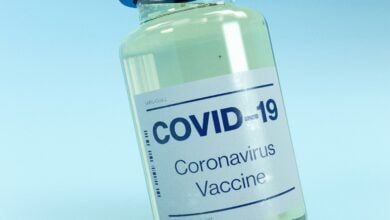Scientists uncover ‘third state’ between life and death

Setting religion and beliefs about the afterlife aside, most people agree there are two stages to the experience of living organisms: life and death.
There’s a lot that goes on in the middle, but the general consensus is that death is the end point.
However, biologists studying how cells could be repurposed have suggested there might be another state altogether – one that could prove groundbreaking in the field of synthetic biology.
In an article published in The Conversation, biologists and co-authors Peter Noble and Alex Pozhitkov described how the emergence of new multicellular life-forms has allowed us to move past ‘the traditional boundaries of life and death’.
Noble and Pozhitkov study what happens within organisms after they die, and with successful organ donations having proven cells can continue to function after someone dies. They have now looked further into the mechanisms that allow this to happen.
In their study, researchers focused on biobots, which arise from the cells of dead organisms, and their capacity to transform into multicellular organisms with new functions after death.
Previously, researchers have found skin cells from dead frog embryos were able to turn into multicellular organisms called xenobots, which showed new behaviours.
For instance, they were able to move using hair-like projections called cilia, which usually are only able to move mucus, not cells themselves.
When studying human lung cells, researchers found cells could assemble themselves into miniature multicellular organisms capable of moving and behaving in new ways.
Considering both of these findings, researchers noted there is an ‘inherent plasticity’ to cells.
With that in mind, researchers could use cells from organisms that are both dead or alive, and potentially turn them into machines with entirely new functions.
There are certain conditions which determine whether cells and tissues can survive after an organism dies. According to Noble and Pozhitkov, these include environmental conditions, metabolic activity and preservation techniques, as well as factors such as age, health, sex and type of species.
However, further research needs to be done to determine how these variables work together to allow certain cells to continue functioning after the death of an organism.
Though research is ongoing, Noble and Pozhitkov explained that the prospect of the ‘third state’ not only gives new insights into how adaptable cells may be, but also offers prospects for new treatments.
Giving examples of how the theory could be put into practise, the authors said: “Anthrobots could be sourced from an individual’s living tissue to deliver drugs without triggering an unwanted immune response.
“Engineered anthrobots injected into the body could potentially dissolve arterial plaque in atherosclerosis patients and remove excess mucus in cystic fibrosis patients.”
If put to use, the researchers noted that the biobots last no more than 60 days, which would prevent the growth of potentially invasive cells.
What Other Media Are Saying
- WION discussed the discovery of a ‘third state’ between life and death challenges our understanding of biology. This phenomenon could redefine concepts of mortality and medical advancements. (Read more)
- Metro reported that scientists uncovering a ‘third state’ suggests life persists post-mortem, transforming cells into new organisms. This groundbreaking research could alter legal definitions of death and enhance medical treatments. (Read more)
- Indy100 shared the identification of a ‘third state’ reveals cellular adaptability beyond life and death. This could lead to innovative therapies, pushing the boundaries of biological existence. (Read more)
Frequently Asked Questions
Here are some common questions asked about this news
What is the ‘third state’ of life proposed by biologists?
The ‘third state’ refers to a state beyond life and death, where cells from dead organisms can be repurposed into functioning multicellular organisms with new behaviours and functions.
How are cells from dead organisms repurposed in research?
Researchers have found that cells, like those from dead frog embryos or human lung cells, can assemble into new multicellular organisms capable of movement and new functions, such as xenobots.
What are biobots and how do they relate to this theory?
Biobots are organisms formed from the cells of dead organisms. These biobots exhibit new functions, demonstrating how cells retain ‘plasticity’ even after death.
What potential applications could this ‘third state’ have in medicine?
Researchers suggest biobots or anthrobots could be used to deliver drugs or dissolve arterial plaque, offering new treatment options without triggering immune responses.
What limits the lifespan of biobots?
Biobots typically last no more than 60 days, preventing the potential for invasive cell growth. Further research is needed to fully understand the factors affecting their longevity.







